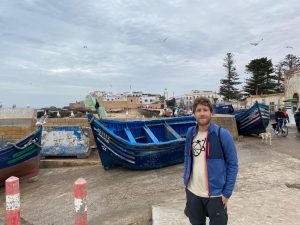What is known about the subject?
Antibiotic resistance is one of the major challenges of the 21st century since it is estimated that 60% of human diseases have a zoonotic origin, and figures are expected to increase in the future. Antibiotic overuse has led to the emergence of new resistances in human pathogenic bacteria. The origin of these resistances is linked to a major use of these drugs in animal and human health, which has affected the environment we live in, with significant concentrations in landfills and sewage treatment plants. In addition, in recent years, improved diagnostic techniques have shown the circulation of certain resistant pathogens such as Escherichia coli in humans and wildlife, including urban gulls.
What does this study add to the existing literature?
This study combines microbiological analyses of prevalence of pathogens in urban gulls present at Barcelona city with individuals tagged with GPS devices for tracking movement data at a spatial scale of very few centimetres. This enables the creation of spatial risk maps of potential spread of pathogens by gulls, both for individuals that tested positive or negative, and can provide evidence to improve the global management of cities in the future. In addition, the study highlights and demonstrates there are differences between adult and immature gulls in the potential dispersal of pathogens. Immatures show longer dispersal distances that go beyond Barcelona city boundaries.
What are the implications of the findings?
This study emphasises the value of the One Health approach by interlinking environmental, animal and human health. It provides an integrating vision that is strongly applicable to the urban management of large cities and can contribute to the decision making of management and prevention of areas at a higher risk for potential dispersion of resistant pathogens. In particular, this study has shown that the urban facilities at higher risk are ornamental fountains and schools. For this reason, specific measures could be implemented, some of which are already being applied by local councils, such as chlorination in the case of ornamental fountains and raising awareness in schools to limit access to food resources and reduce resting areas. These measures within urban areas will contribute to the reduction of risks and will improve global health and the well-being of citizens.

Víctor Martin Vélez
Predoctoral Research Fellow
Instituto de Ciencias del Mar- CSIC


